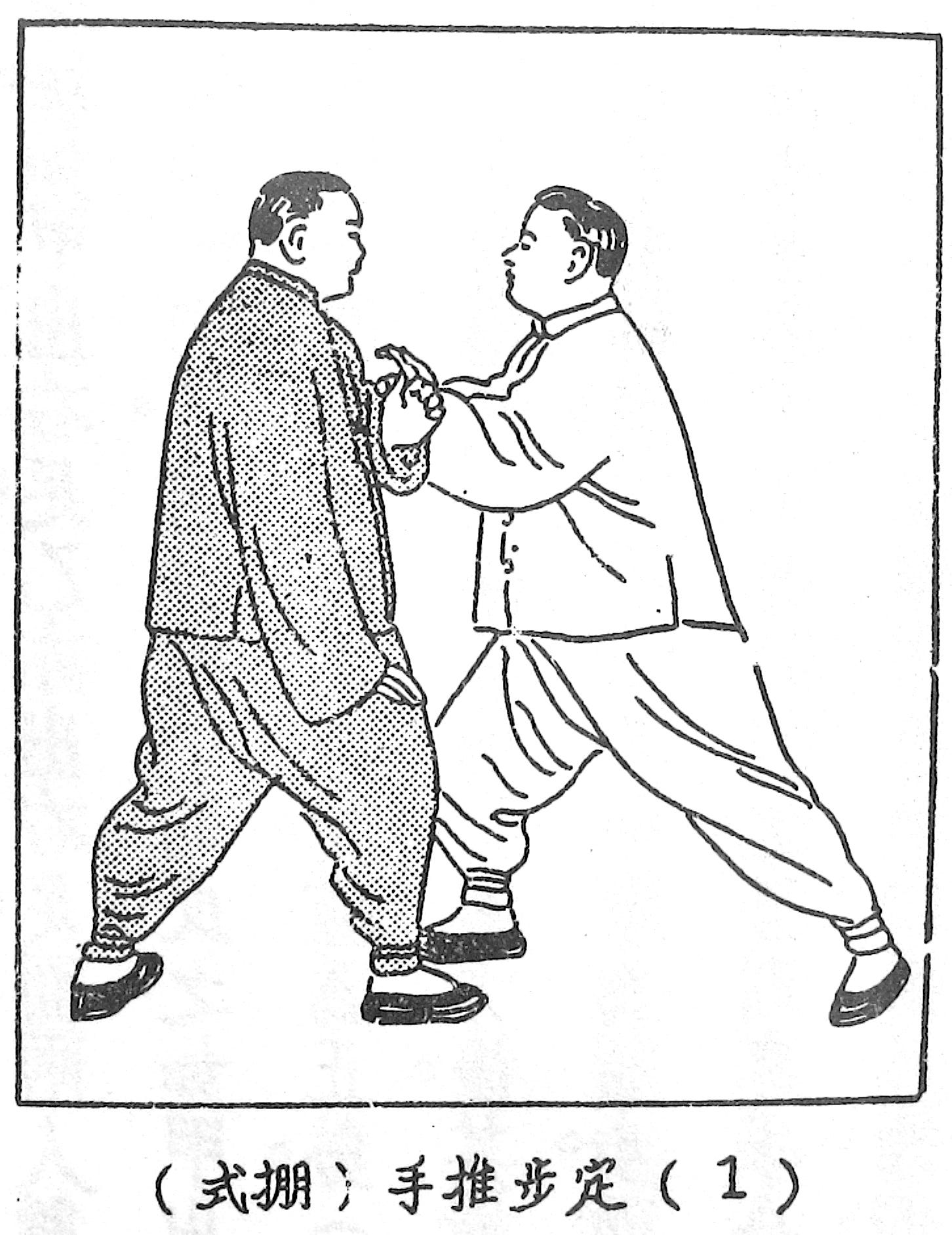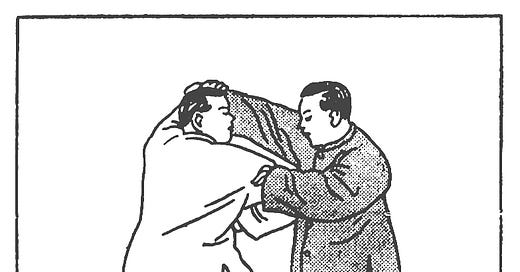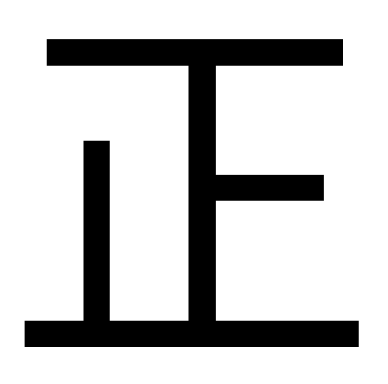Zheng 正 and Yu 隅
Two words, zheng and yu, are at the heart of taijiquan. No topic is more fundamental to an understanding of taijiquan than the theory of the ‘four squares’ and the ‘four corners.’ The art’s methodology, essence, even its raison d’être, can be found in the interplay between square and corner modes of power.
Squares. Zheng 四
Square energy can be understood as an approach to the structural centre of a thing via the pressure created at the point-of-contact between two partners or opponents. Traditionally, square energy is studied by the practice of ‘four-square push-hands’ (四正推手), an interactive partner-training exercise based on four archetypal ‘square energies:’ ‘ward’ (peng 掤), ‘roll’ (lü 履), ‘squeeze’ (ji 擠), ‘press’ (an 按). In traditional taijiquan literature, peng, lü, ji, an are referred to collectively as the ‘sizheng’ (四正) or ‘four-squares.’ Success in four-square push-hands—also known simply as ‘four-hands’—demands and develops ‘sensing energies’ (覺勁) such as ‘sticking,’ ‘listening,’ ‘comprehending,’ and ‘receiving.’

The word zheng as an adjective means: ‘straight,’ ‘upright,’ ‘correct,’ honest,’ and even ‘orthodox.’ As a verb it means to ‘rectify,’ ‘set right,’ or ‘correct.’ The word implies decency, virtue, uprightness, and righteousness. It’s literal opposite ‘buzheng’1 means ‘askew,’ ‘crooked,’ ‘devious,’ ‘lacking in integrity,’ ‘improper,’ ‘immoral,’ and ‘illegitimate.’ Fangzheng,2 meaning ‘square-shaped’ or ‘straightforward,’ is one of dozens of words that zheng combines with to give the impression of either physical or moral justness and directness. Zheng is also found in the words zhengdao (正道), meaning ‘right way’ or ‘correct principle,’ and zhengde (正德) meaning ‘virtue’—‘dao’ and ‘de’ are used in the title of the classic Daoist text The Way and Virtue Classic.3
Corners. Yu 隅
‘Corner’ or ‘diagonal’ energy can be understood as a deviated approach toward or away from the structural centre of a thing and is employed when the square breaks down. In traditional taijiquan curriculum, the sizheng-based ‘four-squares push-hands’ is followed by the ‘large roll’ (dalü 大履), a partner form designed for the study of the four-corners energies—‘pluck’ (cai 採), ‘rend’ (lie 挒), ‘elbow’ (zhou 肘), and ‘lean’ (kao 靠). The dalü variations are, in fact, a direct extension of the four-hands exercise. Dalü takes close-quarter hand-to-hand combat from zheng to yu. Dalü training is a systematic study of the way the siyu energies interact with one another and with those of the sizheng.
The character yu (隅) is comprised of the left radical fu (阝) meaning ‘hill’ and an identically-pronounced phonetic component ‘yu’ (禺) which is often defined as ‘spider monkey’ and is considered by etymologists to depict a beastly, demonic face, drooping arms, and a grasping, prehensile tail. That the choice of yu by past masters, is likely reflective of this construction, especially considering the paramount role of ‘cai’ (採) or ‘plucking’ in bringing the siyu into play in tuishou.
Yu means ‘nook,’ ‘angle,’ ‘border,’ or ‘outlaying place’ and in its most general sense, ‘corner.’ Yu implies both the inner and outer aspects of a corner and, as well, the function of a corner. Another connotations of yu is ‘to be cornered.’
Taken together, the squares and corners are known as the ‘eight gates’ (bamen 八門) and, along with the ‘five stance-phases’ (wubu 五步), they form a part of the ‘thirteen powers’ (shisanshi 十三勢). The ‘gates’ refer to taijiquan ‘martial-kinetic energies’ (jin 勁) or ‘methods’ (fa 法) ‘ward’ (peng 掤), ‘roll’ (lü 履), ‘squeeze’ (ji 擠), ‘press’ (an 按), ‘pluck’ (cai 採), ‘rend’ (lie 挒), ‘elbow’ (zhou 肘), and ‘lean’ (kao 靠). The eight gates, along with the 'five stance-phases' (wubù 五步), comprise the 'thirteen-powers' or ‘shisanshi’ (十三勢).


buzheng (不正) i.e. ‘not’ zheng. (bu zhengdang 不正當) ‘improper,’ ‘immoral,’ ‘illegitimate’
fangzheng (方正) ‘fang’ means ‘square’. Albeit rarely, ‘sifang’ (四方) is used instead of sizheng in old taijiquan manuals.
Way and Virtue Classic (Daodejing 道德經)










